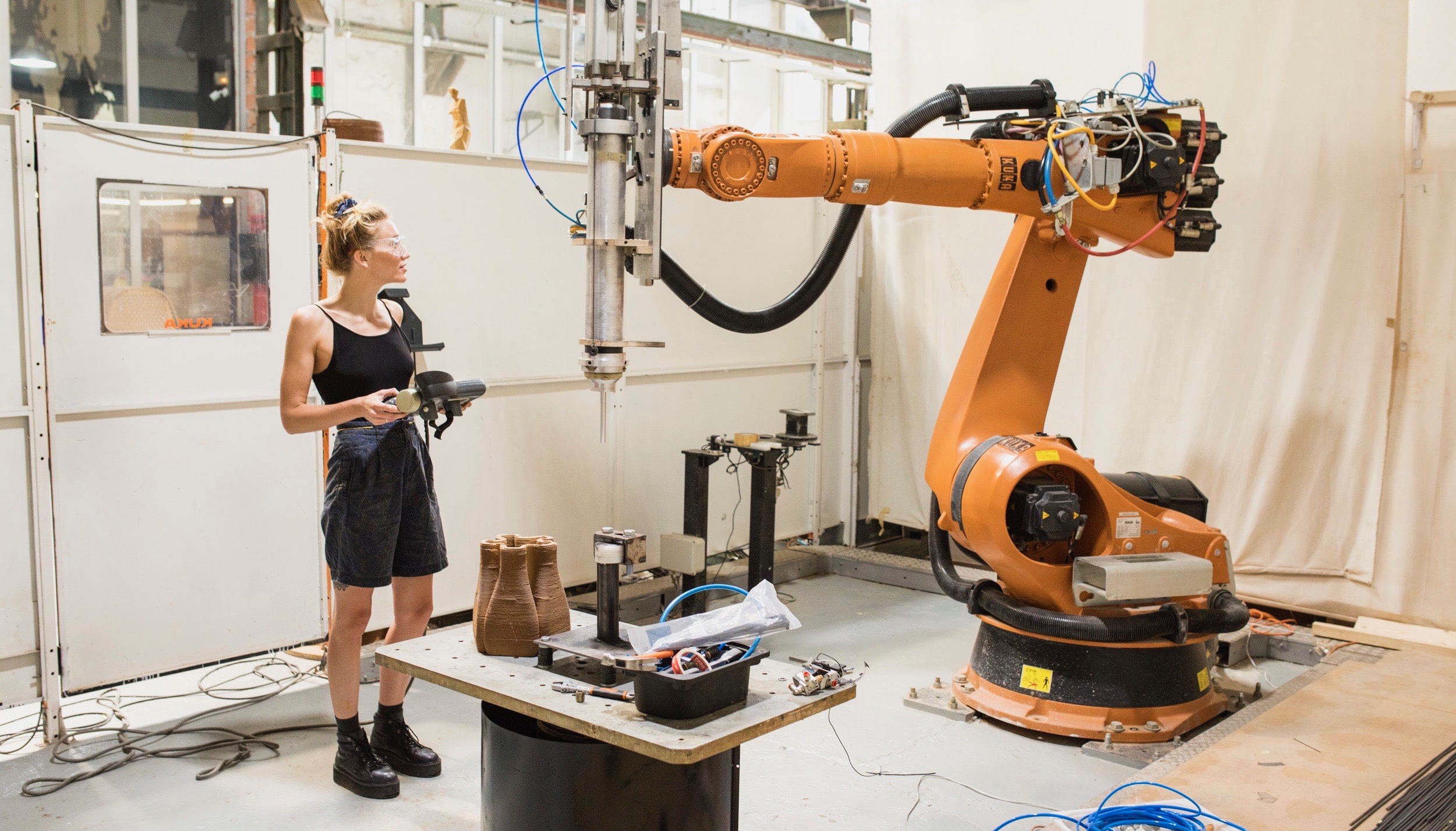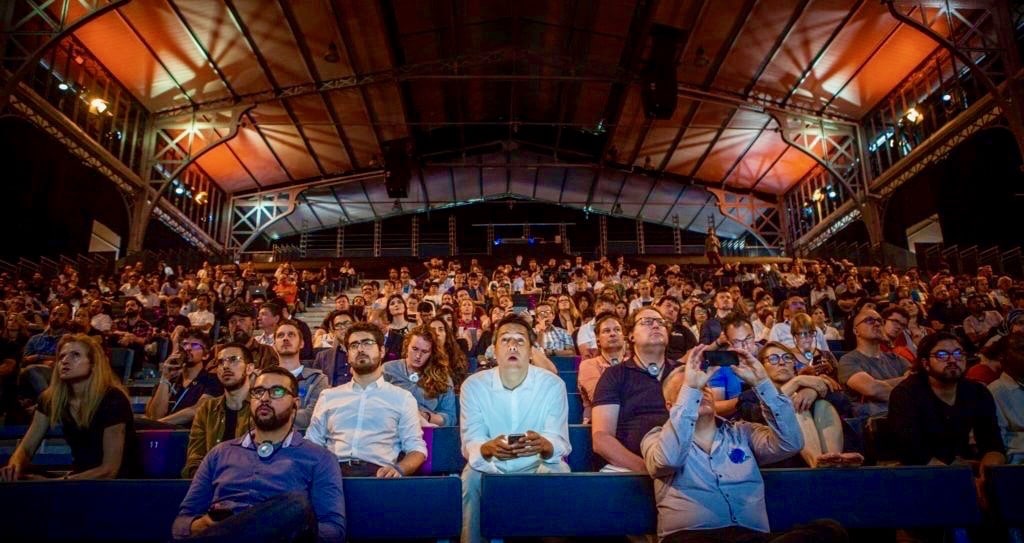 Imagine if you could click a button and be able to grow and make almost anything. That’s what Fab City is all about: a creative collective of pioneers and makers who simply want digital technology to make the world more self-sufficient. And they’re doing it more than one city at a time. In fact, 28 cities are already on board…
Imagine if you could click a button and be able to grow and make almost anything. That’s what Fab City is all about: a creative collective of pioneers and makers who simply want digital technology to make the world more self-sufficient. And they’re doing it more than one city at a time. In fact, 28 cities are already on board…
Watch ► “Are you ready to press the button?”
Today rapid urbanisation presents a grand challenge, as well a massive system-changing opportunity. Fab City is rising to those demands by building a more sustainable and inhabitable new world, collectively, through opening public urban micro-factories – Fab Labs – in the hearts of cities, towns and villages.

Tools for the future
The idea? To be able to provide citizens with all the resources they need without compromising the planet’s ecosystems, so they can eventually produce everything they consume.
A local fabrication laboratory which aims to democratise access to personal and collaborative invention using digital technologies to make almost anything.
The first ever lab was set up in 2003 in Boston within an outreach programme at MIT’s Centre for Bits and Atoms by physicist and professor Neil Gershenfeld and civil rights leader Mel King, Since then it’s evolved into a global network of 1,320 – and the Fab City new urban model. The MIT professor who spurred the digital fabrication revolution has chosen the year 2054 for the countdown to localised production.
“By 2054 70% of us will live in cities. The countdown is running. We have 40 years to change radically our production systems and stop global waste.” – Neil Gershenfeld
Fab City Global has been building momentum since 2014, when the then-Mayor of Barcelona challenged cities worldwide to start a 40-year roadmap. This year another ten cities signed up to the global initiative, pledging to become more sustainable, accessible, locally productive and globally connected. The full list of 28 ‘cities’ ranges from Detroit and Shenzhen to the Kingdom of Bhutan – the only country that has a happiness index for their citizens.

If you’re a country, region or small town you’re also welcome
As co-founding member and instigator of Fab City, Venezuela-born, Barcelona-based Tomás Diez is passionate about changing the way cities consume and produce resources – like energy, food, water, information and products: “Today thousands of people are making the transition from an ‘extractive’ economy to a ‘generative’ one. More production occurs inside the city, along with recycling materials and meeting local needs.” Labs have a dramatic impact on today’s throwaway culture.
If you’ve never been in one, digital fabrication makerspaces aren’t just about 3D printers and getting art and crafty. Fab Labs promote the idea of distributed manufacturing: designs can be sent to the other side of the planet, and using various Ferris Bueller meets Willy Wonka-created machinery, laser cutters and other simple tools, users can create nearly any object, big or small. Think housing, aquaponic systems to grow food, wireless data networks and plastic-free plastics.

Fab is the new black
The aim is to educate society about making the things we really need with local inventiveness.
“Technology and data should serve the people. It should give them back economic and democratic control.” – Francesca Bria, Chief Technology and Digital Innovation Officer Barcelona
Today’s applications are endless. In Ghana, labs have been used to produce a cassava grinder and radio antennae. In Norway, animal herders are making radio collars and wireless networks to track their animals. Farmers in India have created instruments that verify the quality of milk and in Kenya engineering students are using Fab Labs to help doctors find infants’ veins – with the aptly named vein finder. Now that’s crafty.

Alois Mbutura and his vein finder | Photo: Voice of America
Proving that makes a good neighbourhood is a neighbourhood that makes, every year the Fab City Summit brings together more than 1,000 do-ers, civic leaders, makers, urbanists, governments, industries and innovation ecosystems from all around the world with one thing in common – wanting to create a ‘DIY’ urban future that is as accessible, inclusive and open source as possible. At its heart? The circular economy.
An alternative regenerative system prioritising the longevity of goods by sharing or recycling – in contrast to the linear economy’s ‘take, make, dispose’ model of production.
The 2018 summit saw the launch of the Fab City book: ‘The mass distribution of almost everything’. In collaboration with the European Union, United Nations and Barcelona City Council, and edited by Tomás Diez, the collection of Fab experiences features a call to action for people and communities to convince their governments to take part of the network, and to start making something in order to produce change. Consider it a milestone, a manifesto, a map, a guide, and simply a manual for making engaging urban futures possible. Read it online.

Fab City Summit, Paris: Opening minds – and mouths
Tomás believes that creativity can foster inventiveness anywhere in the world to solve the biggest problems of our times. “Design is the most powerful tool we have to ignite the imagination – including those of political and economic leaders – to envision new ways to make use of the resources we have on planet Earth.”
In times of political turmoil, the world’s urban centres should be sending the message that together we can improve lives. So it’s awesome when city leaders come together to take bold actions and show others the way. As Barcelona and Paris share similar visions about urban innovation, their mayors – Barcelona’s Ada Colau and Paris’s Anne Hidalgo have come up with a plan: to create a future enabled by tech and led by women.
“Cities are spaces where we can create collectively. They are a natural space for innovation, an opportunity to rethink democracy with technology.” – Ada Colau, Mayor of Barcelona

Barcelona was the first Fab City
There is no better time to pay attention to the Fab City Manifesto than right now, with its ten principles to enable the urban transition towards locally productive and globally connected cities. To secure the future of our planet we need to scale-up our impact, rapidly.
At the 2018 summit ten new cities took the pledge to join the network taking it to 28. From Kamakura, the Japanese seaside city just south of Tokyo to Mexico City, one of the most populated cities in whole world, to Seoul with its urban-architectural heritage, each city has their reasons for signing up.
Mexico City wants to apply the principles of circular economy: “We should be promoting and strategically taking advantage of resources in a world where citizen participation is more proactive. Take action, use the tools, do it yourself and share your experience.”
Oakland’s creativity makes it the perfect petri dish to incubate new unexpected ideas: “We have problems right now, big ones. I see immediate opportunity for entrepreneurs, including those who have been traditionally excluded – women, people of colour and low income people.”
In the state of São Paulo, Sorocaba has been undergoing extensive urbanisation projects: “We have big companies that work on recycling and we want to connect them to the citizens and empower their impact.”

The revolution will be self-organised
Fab City is all about the people really doing it, not just talking about it. Just as there is no one single founder of Fab City, there is not just one community, it’s about the fab-ric of the city. “This is not based on individual heroism, but a global collaboration.” Check out the sidebar to read about some of the projects that showcase what it’s all about.
“In an ever-changing world, innovation is not an option, it is a necessity.” – Tomás Diez
For example, with Materiom, Liz Corbin and Alysia Garmulewicz have created a collaborative book of open source material recipes with local materials that can be made on a stovetop and dissolved in your sink. Sounds very Breaking Bad doesn’t it? The circular design experts have been compared to physicist and chemist Marie Curie, cooking up potions in her kitchen.
“We see the exponential growth of community-scale centres of production like Fab Labs, makerspaces, and hackerspaces creating the opportunity to build more local and regional supply chains that source abundant, natural materials.” – Liz Corbin, Materiom

Breaking good: nature’s ingredients of the future
If you’re a creative player, maker, designer, artist, architect, scientist or self-confessed ‘nerd’ – you will know that in a Fab City designs travel globally as ‘bits’ and are fabricated in ‘atoms’ locally.
“The philosophy at the heart of Fab City is that atoms that are heavy should stay and move locally because it takes energy and resources to move them around. But bits can go globally. To me that is a leap in industrial design. “ – Kate Raworth
distributeddesign.eu is the collective’s new platform to share those bits and pieces about the market emerging from the latest digital reality. It focuses on connecting makers with markets and provides a discursive space for the development of new market opportunities.
As the global total of Fab Labs worldwide doubles every year, Neil Gershenfeld compares the phenomenon to Moore’s Law – which predicted in 1965 that the power of computers would double every two years for 50 years. At this rate, labs could be as omnipresent as the smartphone: “You will no longer go to a Fab Lab to use its machines, but to build other Fab Labs.”
Meta.

The city today is both the centre of power and hope
Go behind the scenes of Fab City Summit 2018 ► 14+ fab things about the new urban manifesto
Fab City collaborators ► As part of CultureFutures, we asked Tomás Diez for his AtlasChart Top 9 projects – featuring a restaurant you can download and eternal showers of the spotless mind.
More FutureLeagues ► Read more interviews with creative collectives.

